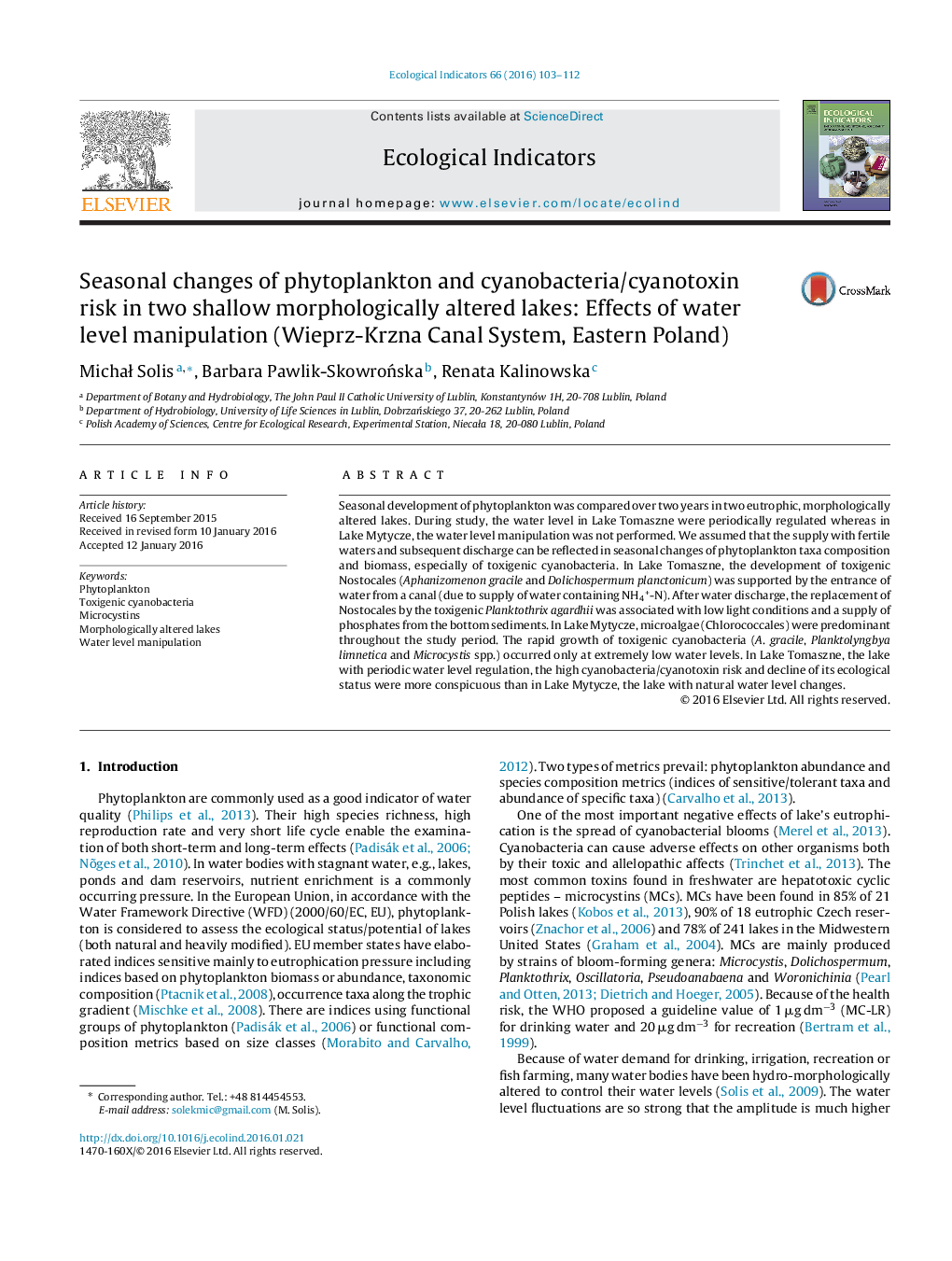| Article ID | Journal | Published Year | Pages | File Type |
|---|---|---|---|---|
| 6293413 | Ecological Indicators | 2016 | 10 Pages |
Abstract
Seasonal development of phytoplankton was compared over two years in two eutrophic, morphologically altered lakes. During study, the water level in Lake Tomaszne were periodically regulated whereas in Lake Mytycze, the water level manipulation was not performed. We assumed that the supply with fertile waters and subsequent discharge can be reflected in seasonal changes of phytoplankton taxa composition and biomass, especially of toxigenic cyanobacteria. In Lake Tomaszne, the development of toxigenic Nostocales (Aphanizomenon gracile and Dolichospermum planctonicum) was supported by the entrance of water from a canal (due to supply of water containing NH4+-N). After water discharge, the replacement of Nostocales by the toxigenic Planktothrix agardhii was associated with low light conditions and a supply of phosphates from the bottom sediments. In Lake Mytycze, microalgae (Chlorococcales) were predominant throughout the study period. The rapid growth of toxigenic cyanobacteria (A. gracile, Planktolyngbya limnetica and Microcystis spp.) occurred only at extremely low water levels. In Lake Tomaszne, the lake with periodic water level regulation, the high cyanobacteria/cyanotoxin risk and decline of its ecological status were more conspicuous than in Lake Mytycze, the lake with natural water level changes.
Keywords
Related Topics
Life Sciences
Agricultural and Biological Sciences
Ecology, Evolution, Behavior and Systematics
Authors
MichaÅ Solis, Barbara Pawlik-SkowroÅska, Renata Kalinowska,
